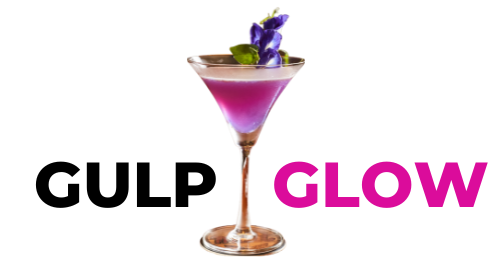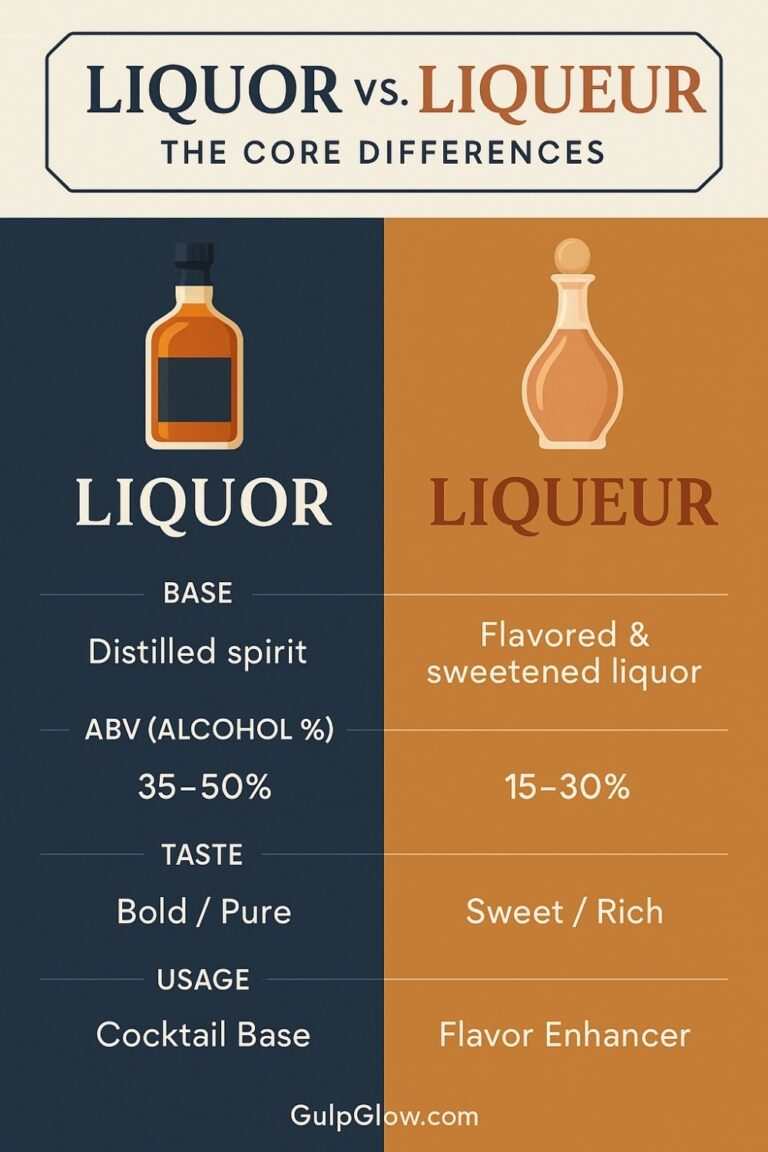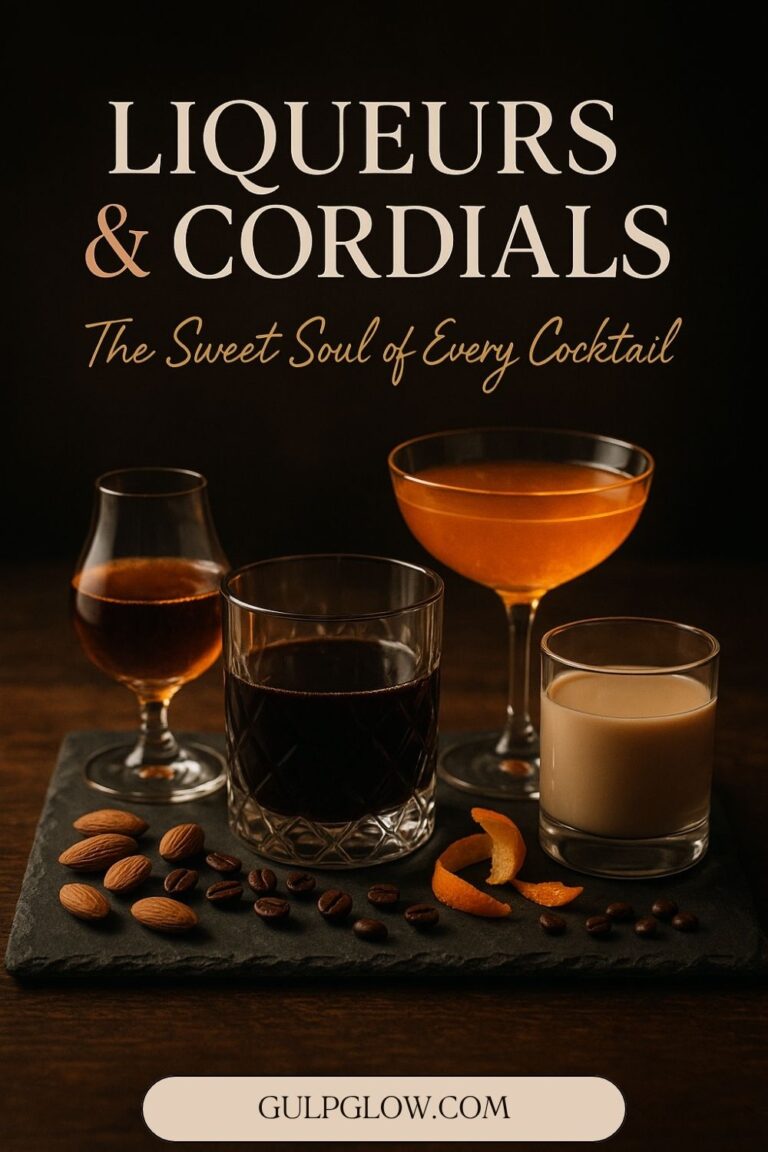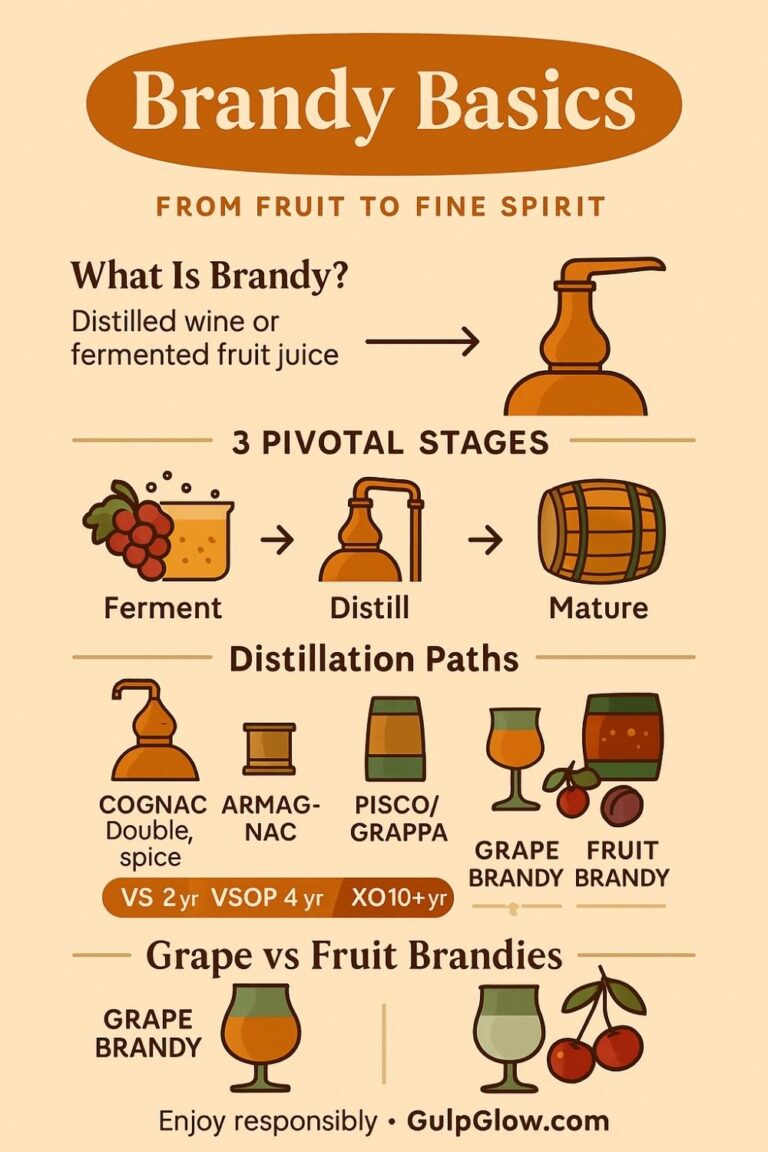Ultimate Rum Guide: White, Dark, Spiced And Beyond
Rum conjures images of sun-kissed islands, swaying palm trees, and adventures at sea—a spirited legacy born from sugarcane and perfected across centuries of trade, colonization, and cultural exchange. Distilled primarily from molasses or freshly pressed sugarcane juice, rum has evolved into one of the world’s most versatile spirits, equally at home in sophisticated sipping glasses and vibrant tropical cocktails.

Yet beneath its laid-back image lies remarkable diversity. White rum offers crisp, clean notes ideal for bright cocktails, while dark and aged varieties boast deep complexity drawn from lengthy barrel maturation. Spiced rums enchant with exotic aromas, and potent overproof rums fuel fiery concoctions and culinary flambés. Rhum Agricole from the French Caribbean showcases grassy, mineral-driven purity, and Brazil’s cachaça, though rum-adjacent, commands its distinct space with unique native-wood aging.
Embark with us on a flavorful exploration through rum’s diverse styles, learning to discern nuances that arise from production methods, barrel influences, and regional terroirs. Whether you’re blending a Daiquiri at a seaside bar or savoring a luxurious aged rum by a winter fire, understanding rum’s rich history and varied expressions enriches every sip.
What Is Rum? Basics & Production
Rum begins its journey in the sun-drenched fields of sugarcane. Unlike whiskey or vodka, rum isn’t bound to a specific region or strict production code, giving it a freedom that reflects its global reach and stylistic diversity. Whether it’s crafted in a Jamaican distillery or a Brazilian sugar mill, the foundation remains the same: rum is distilled from sugarcane byproducts, typically molasses or fresh sugarcane juice.
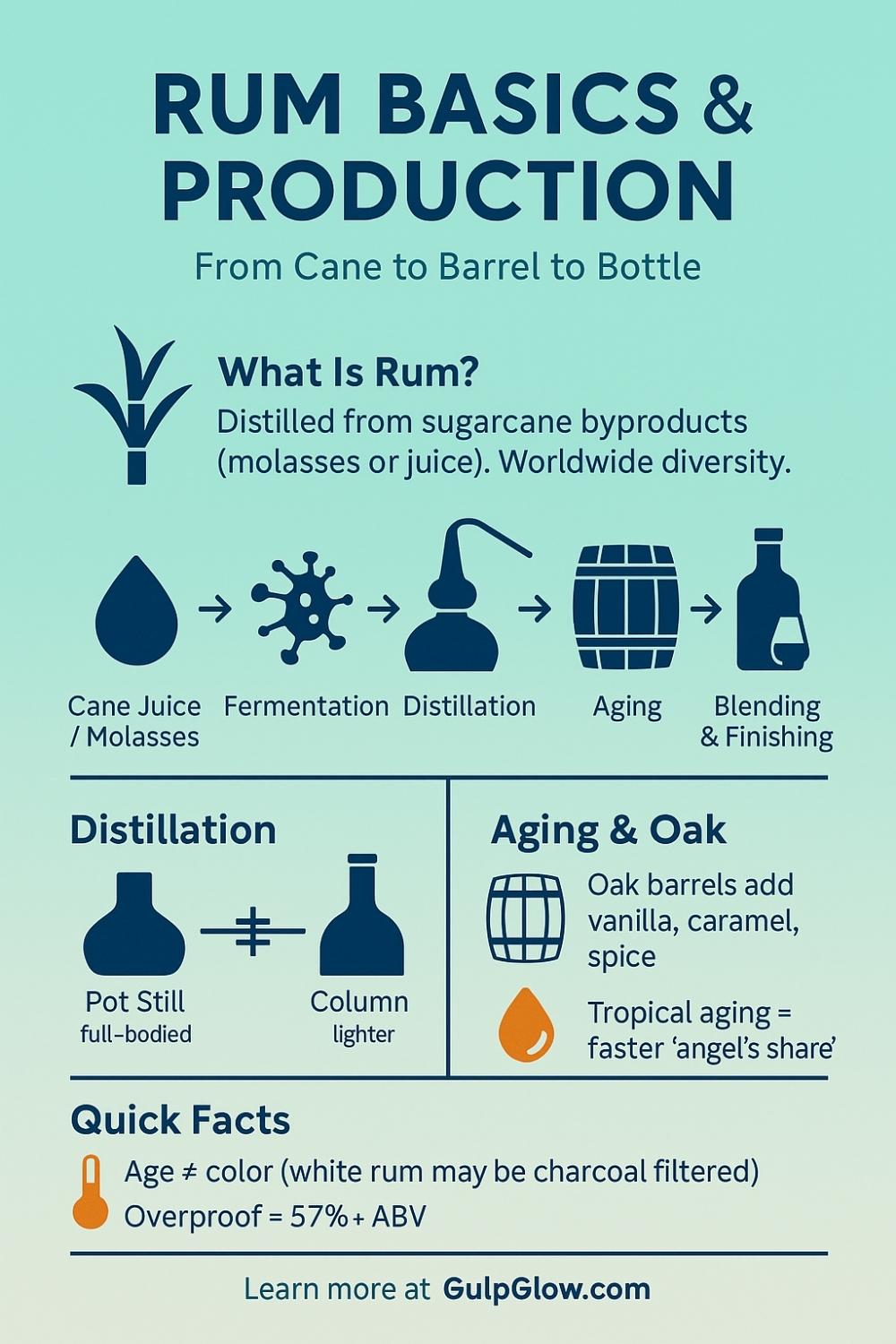
Understanding the Process
The production of rum involves several key stages — each contributing to the flavor, strength, and style of the final spirit.
- Fermentation: Yeast is added to sugarcane juice or molasses to convert sugars into alcohol. This stage can take a few days to over a week, and dramatically influences the final aroma and taste.
- Distillation: Depending on the distillery, rum is distilled using pot stills (for full-bodied, flavorful rums) or column stills (for lighter, more neutral spirits).
- Aging: Many rums are aged in oak barrels. This process darkens the spirit and infuses it with flavors like vanilla, caramel, and spice. In tropical climates, aging happens more quickly due to higher evaporation — a phenomenon often called the “angel’s share.”
- Blending & Finishing: To ensure consistency and character, distillers often blend rums of different ages and styles. Some may be filtered, colored with caramel, or spiced before bottling.
Unlike whiskey, rum has no universal legal standard, so practices vary widely by country and distillery — adding to its mystique and range.
Core Types by Color & Aging
Rums are often classified by appearance — white, gold, or dark — but color is just a starting point. The age, distillation method, and even barrel treatment play roles in defining each style’s flavor and use. To truly understand these categories, it helps to compare them side by side.
Rum Type Comparison Table
| Type | Appearance | Aging | Flavor Notes | Best Used For |
|---|---|---|---|---|
| White Rum | Clear | Unaged or filtered | Light, crisp, subtle sweetness | Mojitos, Daiquiris, Piña Coladas |
| Gold Rum | Amber | 1–3 years | Caramel, vanilla, light spice | Mai Tais, Cuba Libre |
| Dark Rum | Deep brown | 3–7+ years | Molasses, oak, chocolate, dried fruit | Tiki drinks, sipping, rum cake |
Despite their labels, some “white” rums are lightly aged and then charcoal filtered to remove color. Similarly, “dark” rums can vary from genuinely aged to simply caramel-colored. That’s why knowing the brand and process matters more than color alone.
Flavored, Spiced & Overproof Rums
Not all rums play by the traditional rules. Some go beyond natural barrel aging and embrace bold infusions or extreme strength. These specialty rums don’t just add variety — they’ve carved out entire categories of their own.
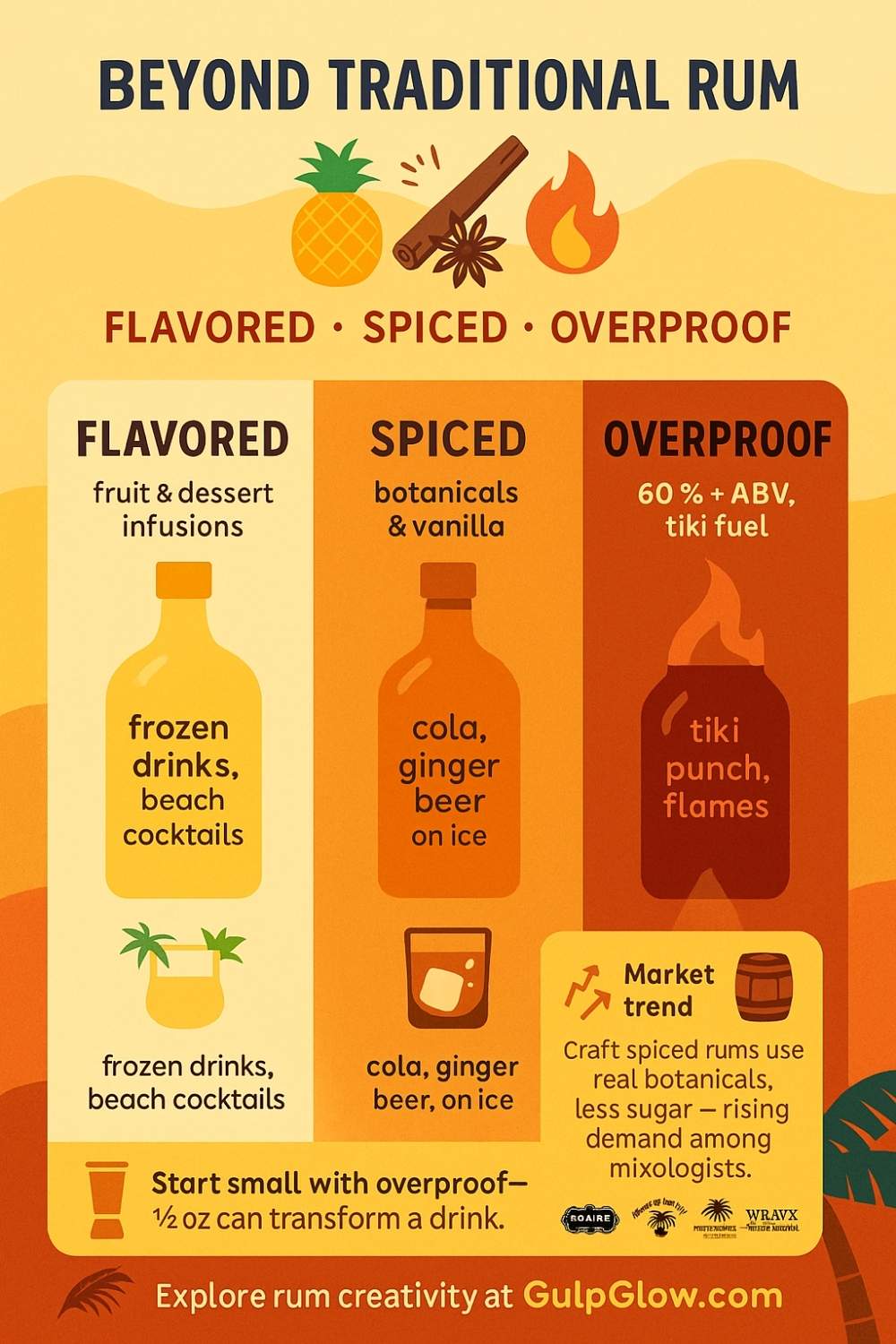
Before diving into specifics, it’s important to understand how these rums are positioned:
- Flavored rums focus on fruit and dessert-like infusions, often targeted at casual or seasonal drinkers.
- Spiced rums build on the base rum with additions like cinnamon, clove, or vanilla, appealing to both mixers and sippers.
- Overproof rums are all about intensity — high in alcohol, bold in flavor, and ideal for punches or flaming cocktails.
Not Just a Gimmick: The Rise of Spiced and Flavored Rums
Spiced rum has come a long way from sugary party staples. While mainstream brands like Captain Morgan and Kraken still dominate, craft distilleries now offer spiced rums made with real botanicals and less added sugar, catering to cocktail connoisseurs. These rums often deliver warmth and complexity perfect for sipping on ice or with simple mixers like cola or ginger beer.
Flavored rums, on the other hand, are usually light-bodied and infused with tropical fruits — think coconut, pineapple, mango. Though sometimes dismissed as “entry-level,” they’re crowd-pleasers in frozen drinks and beach cocktails.
Overproof: Not for the Faint of Heart
These rums pack a punch, often exceeding 60% ABV. They’re not meant for casual sipping but are essential in many tiki recipes where boldness is required to stand out among fruit juices and syrups. Brands like Wray & Nephew or Plantation OFTD offer complex overproof options that balance heat with depth.
Quick Tip: If you’re experimenting with overproof rum, start small. A half-ounce can transform a cocktail — or overpower it.
Rhum Agricole vs. Cachaça: Rum’s Cane Juice Cousins
While most rums are made from molasses, two vibrant offshoots — rhum agricole and cachaça — are crafted from fresh sugarcane juice, giving them a unique identity. Though both share botanical roots, they are culturally and stylistically distinct, shaped by geography, regulation, and tradition.

A Tale of Two Terroirs
Rhum Agricole hails from the French Caribbean islands, most notably Martinique, where production is tightly controlled by an AOC (Appellation d’Origine Contrôlée). It’s distilled directly from sugarcane juice, often using column stills, which results in a spirit that is grassy, dry, and aromatic. Because it’s less sweet than molasses-based rum, agricole can surprise first-time drinkers with its earthy character.
In contrast, Cachaça is Brazil’s national spirit — and while legally distinct from rum in the U.S., it shares many similarities. Like agricole, cachaça is made from fresh-pressed cane juice, but it’s typically distilled to a slightly lower proof and may be aged in native Brazilian woods like amburana or jequitibá, which impart exotic flavors.
Comparing Agricole and Cachaça
| Characteristic | Rhum Agricole | Cachaça |
|---|---|---|
| Origin | French Caribbean (Martinique) | Brazil |
| Base Ingredient | Fresh sugarcane juice | Fresh sugarcane juice |
| Flavor Profile | Grassy, earthy, floral | Herbal, fruity, spicy |
| Common Use | Ti’ Punch, sipping neat | Caipirinha, shots, cocktails |
| Aging Practices | Often aged in oak barrels | May be unaged or aged in native woods |
Despite their differences, both spirits offer a more terroir-driven experience than typical molasses rums — meaning they reflect the land, climate, and culture where they’re produced. Exploring either is a must for rum lovers seeking something off the beaten path.
Regional Styles & Production Methods
Rum may be a single spirit, but it’s not a uniform one. The style, flavor, and even strength of rum can vary dramatically depending on where it’s made and how it’s produced. Three dominant traditions have shaped the global rum landscape: English, Spanish, and French styles.
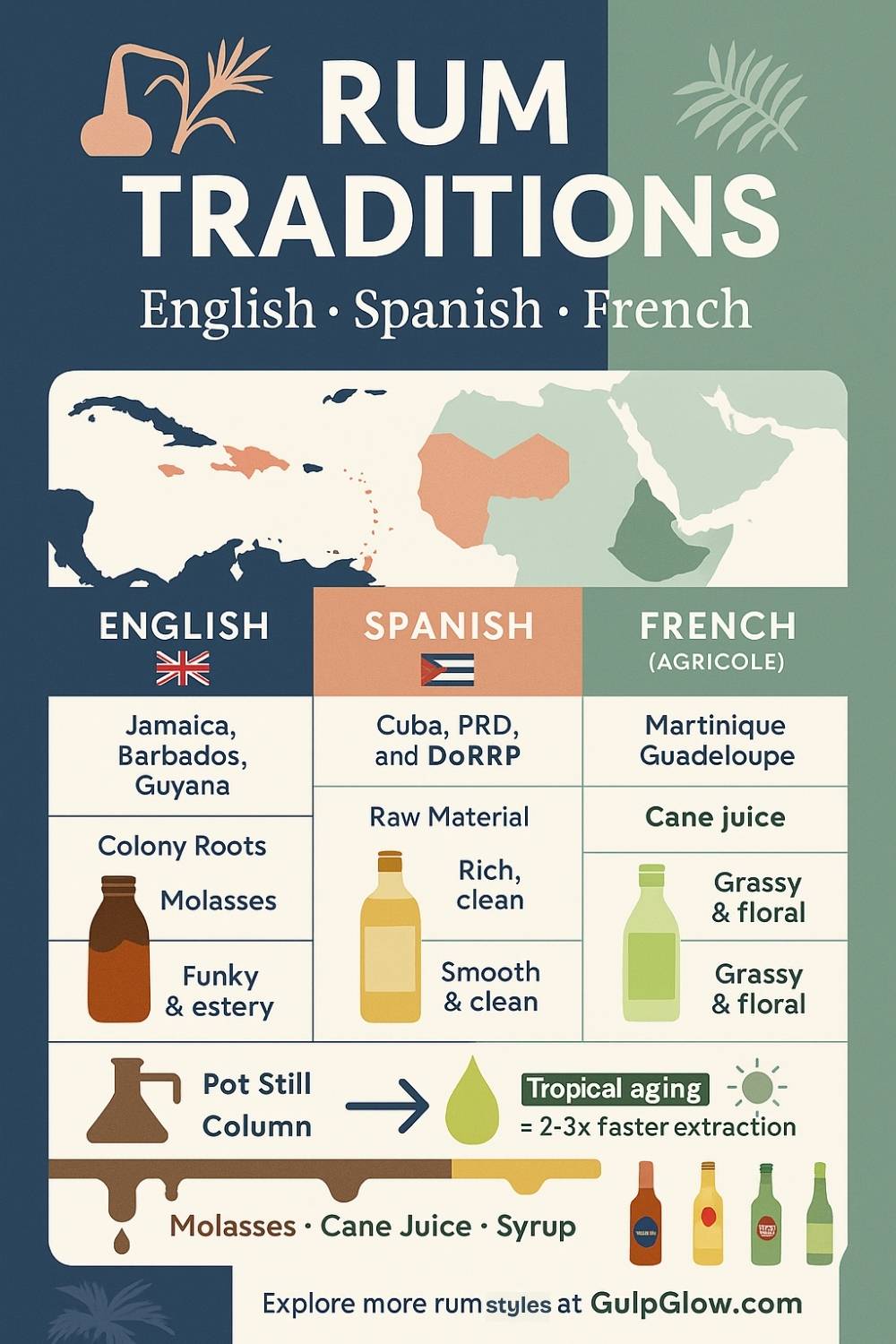
The Three Traditions
- English-Style Rum
Produced in former British colonies like Jamaica, Barbados, and Guyana. These rums often use molasses and pot stills, producing rich, heavy, “funky” rums with strong esters and deep flavors. Examples: Pusser’s, Smith & Cross, El Dorado. - Spanish-Style Rum
Originating from Cuba, Puerto Rico, and the Dominican Republic. These are generally lighter rums, distilled with column stills, and aged to produce smooth, clean spirits. Examples: Bacardi, Ron Barceló, Havana Club. - French-Style Rum
Known as rhum agricole, found primarily in Martinique and Guadeloupe. These rums are cane juice-based and reflect a wine-like philosophy of terroir and regional identity.
Distillation & Raw Material Choices
Another key variation lies in the technical approach:
- Pot Still: Produces fuller-bodied rums with bold flavors — ideal for aged, premium expressions.
- Column Still: Yields lighter rums, often used in mass-market or white rum production.
- Raw Material: Molasses-based rums dominate globally, but cane juice and sugar syrup rums offer more agricultural notes and complexity.
These variables combine with aging practices and climate (tropical aging is much faster than in temperate zones) to create rums as different as Scotch is from Bourbon.
How to Choose & Use Each Rum
With so many rum types and regional differences, choosing the right bottle can be overwhelming. But if you think in terms of purpose, flavor profile, and occasion, selecting the right rum becomes easier — and more fun.
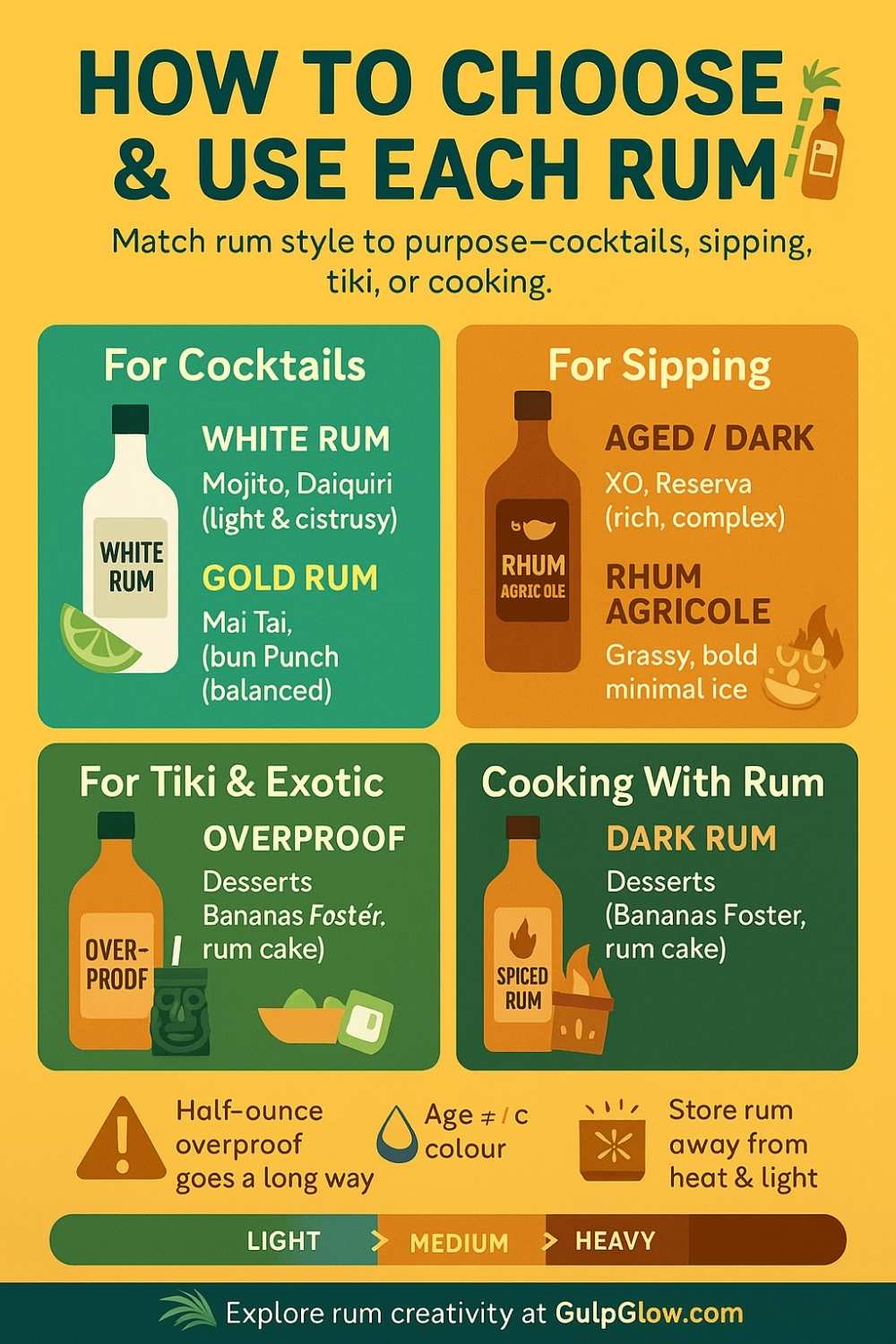
Choosing Based on Use
For Cocktails:
- White Rum: Best for light, citrusy drinks like Mojitos and Daiquiris.
- Gold Rum: Great for classics like Mai Tai or Rum Punch.
- Spiced Rum: Perfect for simple mixers like cola or ginger beer.
For Sipping:
- Aged or Dark Rum: Look for statements like “XO” or “Reserva.” Rich and complex — ideal for slow savoring.
- Rhum Agricole: For those who enjoy bold, grassy spirits. Best neat or with minimal dilution.
For Tiki & Exotic Cocktails:
- Overproof Rum: Adds punch and flavor depth — use sparingly.
- Blended Rums: Many tiki recipes call for a mix of white, gold, and overproof in one drink.
Cooking With Rum
Rum’s depth makes it a favorite in the kitchen. Use dark rum in desserts like banana foster or rum cake. A splash of spiced rum can elevate marinades, glazes, or even BBQ sauces.
Quick Guide: What Rum for What?
| Task/Drink | Ideal Rum Type |
|---|---|
| Mojito/Daiquiri | White Rum |
| Mai Tai | Gold or Aged Rum |
| Caipirinha | Cachaça |
| Rum Old Fashioned | Dark or Aged Rum |
| Baking | Dark or Spiced Rum |
| Flambéing | Overproof Rum |
Ultimately, the best rum is the one that suits your taste — so don’t be afraid to experiment across styles and brands.
Rum Myths & Misconceptions
Despite its popularity, rum is often misunderstood. Let’s debunk some common myths that might be clouding your glass:
Myth 1: Darker rum is always older
Not necessarily. While aging does deepen color, many dark rums get their hue from added caramel coloring — not years in barrels. Always check the label for aging statements.
Myth 2: Spiced rum is low-quality
Not true anymore. While some mass-market spiced rums are heavy on sugar and artificial flavoring, many craft distilleries now produce complex, spice-infused rums that rival traditional aged expressions.
Myth 3: All rum is sweet
Rum is made from sugarcane byproducts, but it’s not inherently sweet. Some producers add sugar post-distillation (especially in cheaper brands), but many premium rums are dry, especially agricole and overproof styles.
Myth 4: Cachaça is the same as rum
Close, but not quite. Cachaça is made from fresh cane juice like rhum agricole but follows different production rules, especially in Brazil. It’s legally recognized as a distinct spirit in several countries, including the U.S.
Top Rum Brands by Type
If you’re ready to stock your home bar or expand your palate, here are top-rated and widely respected rum brands across categories:
White Rum
- Havana Club 3 Años (Cuba)
- Plantation 3 Stars (Caribbean blend)
- El Dorado 3 Year Old (Guyana)
Gold & Aged Rum
- Appleton Estate Reserve (Jamaica)
- Mount Gay Eclipse (Barbados)
- Diplomático Reserva Exclusiva (Venezuela)
Dark Rum
- Gosling’s Black Seal (Bermuda)
- Myers’s Original Dark (Jamaica)
- Pusser’s Navy Rum (British Virgin Islands)
Spiced Rum
- Kraken Black Spiced Rum
- Chairman’s Reserve Spiced (St. Lucia)
- Sailor Jerry Spiced Rum
Overproof Rum
- Wray & Nephew White Overproof (Jamaica)
- Plantation O.F.T.D. (Global blend)
- Lemon Hart 151 (Guyana)
Rhum Agricole
- Rhum J.M. Blanc (Martinique)
- Clément VSOP (Martinique)
- La Favorite Coeur de Rhum (Martinique)
Cachaça
- Leblon (Brazil)
- Ypióca (Brazil)
- Novo Fogo Silver (Brazil)
These brands are known for quality and consistency, whether you’re sipping neat, mixing a cocktail, or experimenting with flavors.
Conclusion: The Spirit of Exploration
Rum isn’t just one spirit — it’s a world of flavors, histories, and traditions bottled up and waiting to be explored. From the clean crispness of white rum to the deep intensity of overproof, from grassy agricoles to the festive pulse of cachaça, every bottle has a story.
As you taste your way through the spectrum, you’ll discover more than just flavor — you’ll tap into centuries of maritime trade, colonial history, and cultural innovation. So next time you pick up a bottle, don’t just drink rum — experience it.
Cheers to discovery, diversity, and the sweet spirit of sugarcane.
